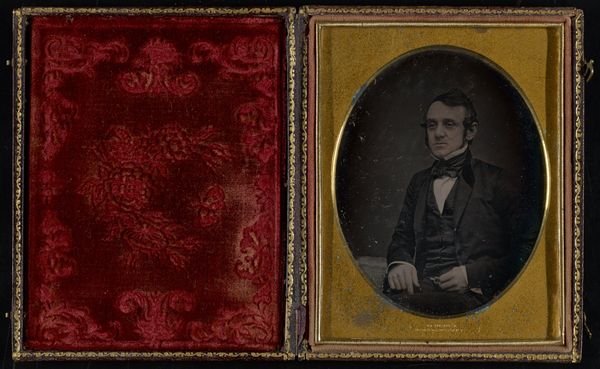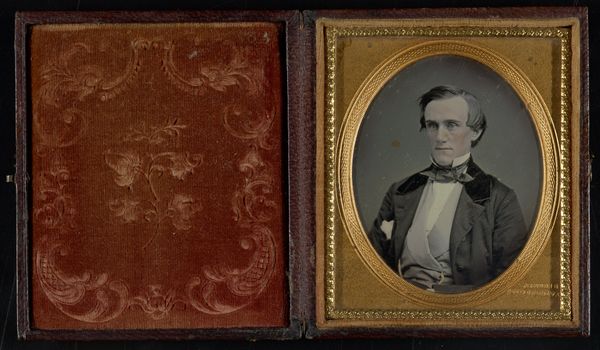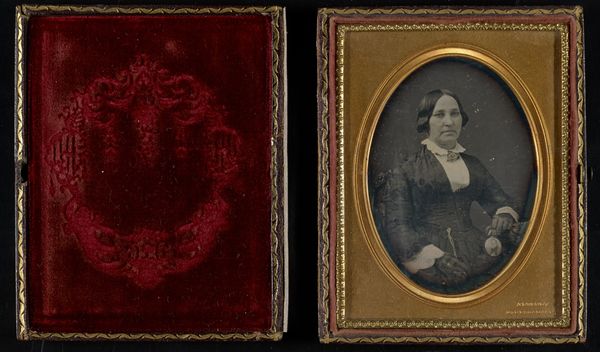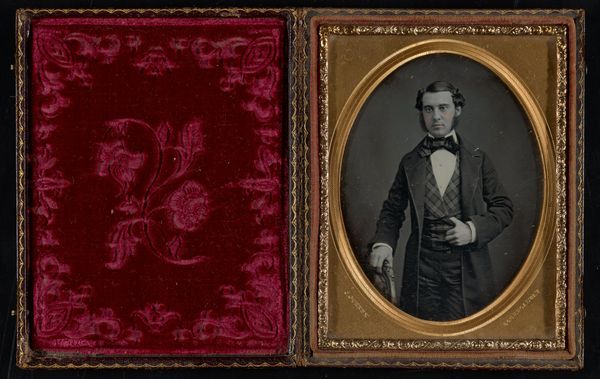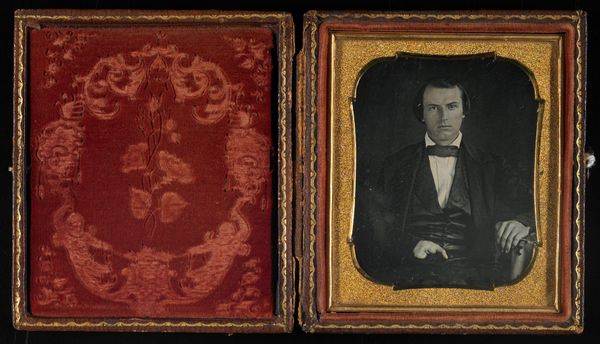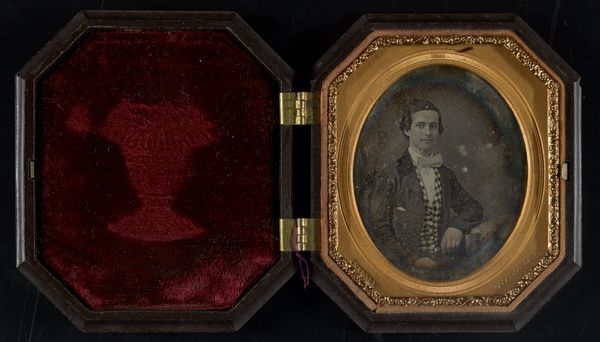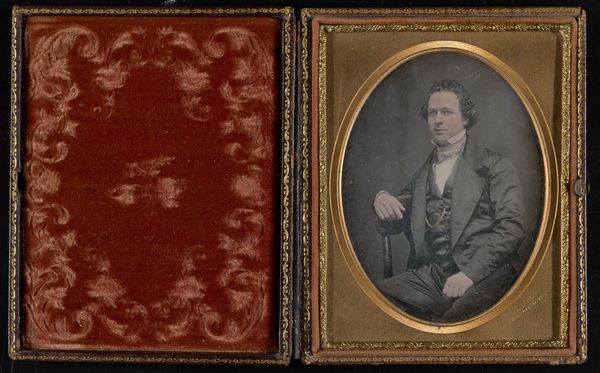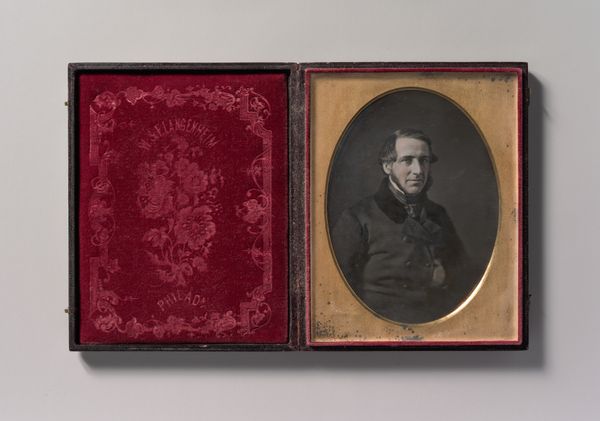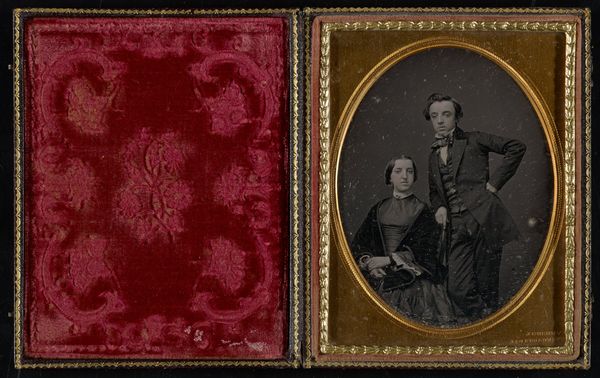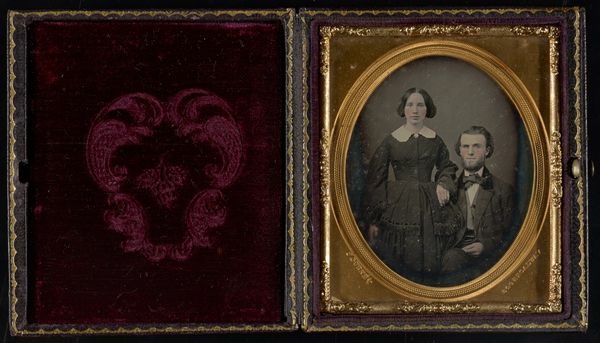![Untitled [portrait of a gentleman in a three piece suit] by Jeremiah Gurney](/_next/image?url=https%3A%2F%2Fd2w8kbdekdi1gv.cloudfront.net%2FeyJidWNrZXQiOiAiYXJ0ZXJhLWltYWdlcy1idWNrZXQiLCAia2V5IjogImFydHdvcmtzL2Y0OTIwNTQ5LThlYjEtNDQ1Yy1iYjhmLWJiNTA1YWNmMWFhYS9mNDkyMDU0OS04ZWIxLTQ0NWMtYmI4Zi1iYjUwNWFjZjFhYWFfZnVsbC5qcGciLCAiZWRpdHMiOiB7InJlc2l6ZSI6IHsid2lkdGgiOiAxOTIwLCAiaGVpZ2h0IjogMTkyMCwgImZpdCI6ICJpbnNpZGUifX19&w=3840&q=75)
Untitled [portrait of a gentleman in a three piece suit] c. 1844 - 1852
0:00
0:00
daguerreotype, photography, gelatin-silver-print, albumen-print, pendant
#
portrait
#
daguerreotype
#
photography
#
gelatin-silver-print
#
united-states
#
decorative art
#
miniature
#
albumen-print
#
pendant
Dimensions: 3 1/4 x 2 3/4 in. (8.26 x 6.99 cm) (image)3 5/8 x 3 3/16 x 11/16 in. (9.21 x 8.1 x 1.75 cm) (mount)
Copyright: Public Domain
Editor: This daguerreotype portrait, made by Jeremiah Gurney between 1844 and 1852, depicts a gentleman in formal attire, nestled in a beautiful case. It's striking how the small scale creates an intimate, almost secretive feeling. What do you see in this piece, beyond just a portrait? Curator: Beyond the individual sitter, I see a reflection of burgeoning American identity in the mid-19th century. Daguerreotypes, though novel, quickly became democratized portraiture. This wasn't just about preserving likeness; it was about claiming a space in a visual culture previously reserved for the elite. The very act of commissioning such a portrait becomes a political act. How does this man wish to be perceived? Editor: So you’re suggesting it challenges earlier portrait traditions, making representation more accessible? Curator: Precisely. Think about the social conditions then—industrialization, urbanization. The rise of the middle class craved visibility. The meticulousness of the man's dress, the bourgeois confidence—it all signals upward mobility and a desire for social recognition. What does it mean for previously marginalized communities that are gaining representation and recognition in the social arena? Editor: It is a move towards equity, in terms of portraiture. It also humanizes figures that were largely unacknowledged previously. Curator: Indeed! The daguerreotype then serves as both a document and a catalyst for this shift, prompting dialogues about who gets to be seen and how they choose to be seen. And this seemingly simple portrait is now charged with historical and cultural weight. It causes us to confront questions about visibility, agency, and the democratizing potential of art. Editor: That’s a fascinating way to reframe a portrait as a symbol of broader social changes. I will definitely think about that in future artworks!
Comments
No comments
Be the first to comment and join the conversation on the ultimate creative platform.
